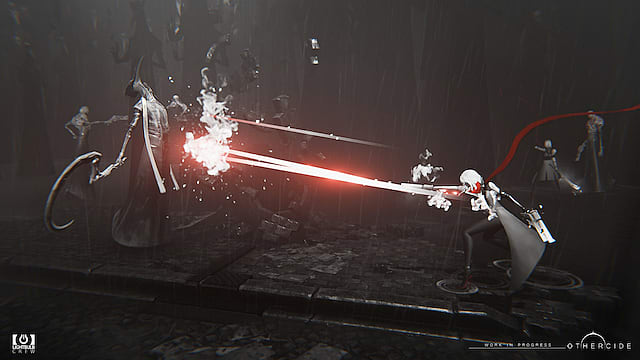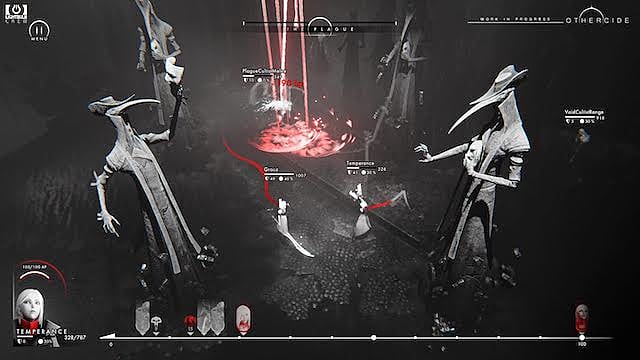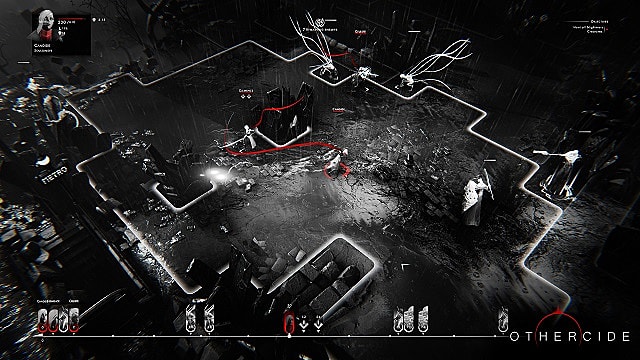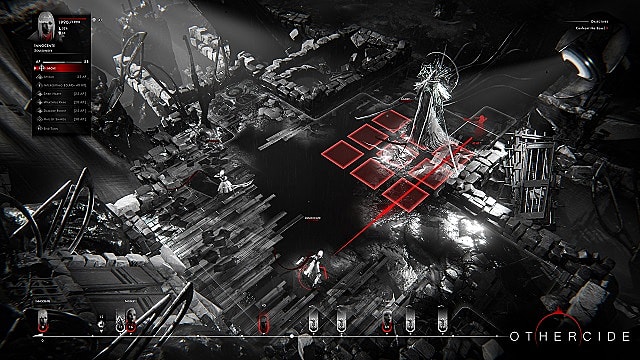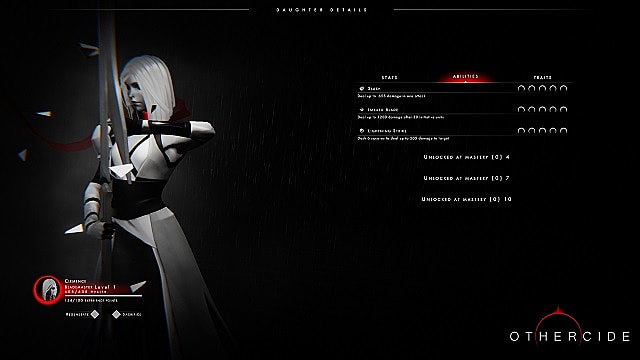“I’m sure most of the team would appreciate that comparison,” Anders Larsson says with a wide smile. Anders is the CEO and Creative Director at Lightbulb Crew, and he’s leading me through a demo of Othercide, the studio’s upcoming turn-based RPG.
He’s explaining the game’s systems and making sure I don’t die too many times. I kill another enemy with a powerful backstab-ranged combo, all while avoiding the incoming volley from his foul friend to my right.
Anders is a great guide, and Othercide is a blast.
In retrospect, it’s certainly a bit reductive to compare Othercide to XCOM and Dark Souls. On the surface, there are a lot of similarities between the three games, from how combat plays out similarly to the popular Firaxis series to how the enemies and world look beautifully Lordran-adjacent.
But dig deeper, and there’s something more compelling underneath that familiar surface. Othercide isn’t just a successful merging of XCOM and Dark Souls but the intelligent manifestation of something uniquely iterative.
Instead of something as plodding and methodical as XCOM or Dark Souls, Othercide is a game predicated on high-octane action inside a turn-based architecture. Anders told me that one of the guiding principles behind the game’s development was in recreating the feeling of an action movie.
In that way, action movies are often explosively dynamic. Attempting to replicate that feeling, Othercide has a bevy of actions meant to change up the gameplay from what genre fans may find familiar. Some actions happen immediately, other actions are delayed, and others still can interrupt enemy attacks either immediately or on a delay.
You have these epic moments where your favorite character is about to be killed but the bad guy gets distracted by somebody else or somebody throws themselves into place and takes a bullet for them.
With all of this in mind, the biggest hurdle in the team’s way, according to Anders, was the most integral piece of any turn-based title: the turn itself.
The solution is what Lightbulb Crew calls the timeline, which extends from one side of the screen to the other underneath all of the action. Both your characters and enemy mobs are represented as portraits on the timeline and numbers represent intervals of time.
Of course, there can be infinite mobs spawning into the timeline after others are defeated, but you, as a player, typically have access to only three characters at any given moment. From what I saw in my relatively short demo, it seems that one of your characters always starts at the far left end of the timeline, allowing you to move at least one character first.
The other two Daughters will land somewhere in the timeline, sometimes in direct succession of each other or sometimes with enemies spawning in between. Regardless of positioning, you spend points to move the Daughters up the timeline.
But everything outside of movement costs AP, from attacks to special abilities. And points are also tied to your overall health pool.
So while a certain number of points might get you past an enemy attack in the timeline and let you land a devastating attack, you might be left with too few hitpoints to defend yourself in the future, leaving you vulnerable to another enemy attack that lands in the timeline before your next movement.
While it doesn’t seem to completely erase turns, the timeline allows gameplay to feel much more fluid than it might in other genre titles. In my 45 minutes with Othercide, the moment-to-moment action felt perhaps not more strategic than say XCOM but continuously more rewarding.
Each move and decision carried with it dramatic weight and, when pulled off correctly, even more dramatic power. That feeling wasn’t sullied by Anders helping me through each mission, and it speaks volumes for a game of Othercide’s ilk. Every significant action was akin to a well-placed overwatch kill.
Such a system creates uniquely strategic and emergent scenarios that aren’t often possible elsewhere.
Adding to that, another neat wrinkle is that you’re able to see enemy attacks well before they happen, giving you time to plan around them. While that doesn’t mean you’ll always be able to avoid enemy attacks, especially if you don’t plan correctly, it has the benefit of making you feel completely unstoppable when you correctly line everything up and cut through enemies from one end of a map to another.
While I won’t get into the story elements of Othercide and the reason characters are called Daughters, I will say that you can create an army of them to push back the forces of evil. Each Daughter adheres to one of three classes, each with unique abilities and skills.
As you play, you come across memories, which you then use to upgrade abilities and traits. These, in turn, can be buffed with different enhancements, such as making attacks stronger or providing more critical-hit chance. Of course, these enhancements also make certain Daughters more powerful when facing certain enemy types, further playing into your overall strategy.
Additionally, Othercide features rogue-like elements and permadeath, where you play across a specific timeline with a specific set of Daughters. Lose one Daughter to save the others, and though you can create a new one in her place, she’ll be gone forever. Lose to the boss at the end of each timeline, and you’ll find yourself starting over.
Othercide certainly has me intrigued. It’s accessible enough for newcomers but deep enough for those that have been playing turn-based RPGs and turn-based strategy games for decades.
With a guide, it took me 45 minutes to get through two of the game’s early levels. And while I don’t know exactly how long the finished game will be, it’s likely to be a hefty experience.
Anders assured me that those who enjoy lore and story will find plenty to uncover while playing through Othercide. Conversely, he also assured me that those who just want to “min-max” can skip over all of that and just play the game.
There’s still a lot to learn about Othercide between now and when it (hopefully) releases later this year on PC. Until then, we’ll be keeping an eye on it. Be sure to check the game’s official reveal trailer over here, and stay tuned to GameSkinny for more on Othercide as it breaks.
